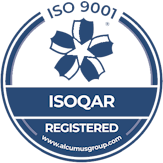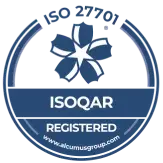In this era of the IT landscape, a strong, long-term product roadmap can be more of a hindrance than a trait. The agile product roadmap is a flexible plan that evolves with the varying customer needs & organization goals. An Agile roadmap targets the adaptability, frequent improvement & outcomes.
Whether you are a product manager, owner, or founder, crafting an Agile roadmap assists the team to prioritize the accurate approach. It offers context around everyday teamwork, long-term vision & response to competitive shifts. Additionally, in the past five years, developers’ use of agile has increased from 37% to 86%.
Balancing speed & quality in Agile QA is a challenge, but when you have a well-implemented agile QA roadmap, it will be easy. In this blog, we are going to share actionable steps to build a product roadmap designed by a software testing company that keeps your team focused. Later, we’ll discuss a few challenges & best practices to give you a broader insight into the Agile QA approach.
Understanding the Agile QA Roadmap
➥ Definition of an Agile QA Roadmap
95% of organizations, according to research, employ Agile development approaches. The Agile QA Strategy product roadmap is the best plan to know how a product will evolve over time. The product QA team uses roadmaps for outlining the future product functionalities & when advanced features are released. When used in agile development, the roadmap offers the necessary context of the team’s tasks & their future vision.
The product roadmap is a strong visual tool that outlines the development plan & product journey. The roadmap documentation communicates the product goals, involves key milestones, and features for future release. This product roadmap offers a streamlined method for the QA team to align with the product’s trajectory. The roadmap is designed with several goals in mind that might include-
● Craft a strategic plan with the key initiatives.
● Make sure everyone understands & abide with product’s plan & vision.
● Emphasize the features that match customers’ expectations.
● Manage plans according to market fluctuations & user feedback.
● Prioritize the tasks for effective resource allocation.
Agile QA roadmap outlines key practices for integrating QA with Agile development procedures. The roadmap of Agile QA Strategy focuses on continuous testing, adaptation & collaboration to verify software quality. At the same time, the traditional QA plan follows the continuous approach with testing. These plans are tough & focused on a pre-defined testing phase. While traditional project handling works well for tasks with defined, static requirements, the agile approach in software testing is more suitable for projects where flexibility and client input are crucial.
➥ Benefits for Product Leaders
Clear alignment between product vision and quality goals- The Agile Test-Driven Development roadmap gives a clear alignment of product vision & quality goals. This roadmap assured that every development effort is focused on delivering a product that matches the company’s goals & user expectations.
Early risk detection and mitigation- The QA roadmap focuses on integrating QA into the development process from the beginning, using iterative sprints. It addresses potential defects proactively. The following approaches accelerate collaboration & risk-based testing to ensure quality software delivery.
Continuous improvement loops- The product leader benefits from QA Continuous Testing in the Agile roadmap since it focuses on iterative enhancements to the quality assurance process throughout the SDLC. It includes continuous review & refines the strategies for efficient optimization.
Step-by-Step Process for Building an Agile QA Roadmap
To design a QA roadmap, the product owners must evaluate the ideas depending on the key areas. These key areas involve customer insights, market fluctuations, business goals, etc. Once the factors are understood, the product team works together. While planning & designing an Agile QA roadmap, ensure it is understandable for users. Offering too many details or too little information can worsen the case. Design the roadmap with an accurate amount of detailing. Here, take a look at the step-by-step QA process-
Step 1 – Define Quality Objectives
In the initial phase of QA Agile roadmap construction, start with the brief information on the product’s goals & targeted audience. Understand the long-term vision & aim that guide the QA process. The foundation must match the organization’s mission & strategic QA objectives with product OKRs.
Start documenting the quality goals & understand what software quality assurance matters for your product. Decide how you will measure the QA project’s success. Your test planning should outline the strategies, methodologies, testing type, resources & timelines. This plan must include a combination of manual & automation testing for improved results.
For better results, involve the cross-functional stakeholders early in the SDLC Agile Test Automation Strategy. The quality objectives should be precise & straightforward. Product owners must describe necessary aspects that involve testing scope, roles & responsibility, testing types, quality criteria, etc.
Step 2 – Map the Product Development Lifecycle
In Agile, the QA process is integrated throughout the product development lifecycle, rather than the final phase. This step prioritizes the regular testing, collaboration & iterative development to verify the quality of software delivery. The Agile QA procedure aligns with the iterative Agile nature, with testing activities happening in every sprint.
Mapping product development lifecycle in Agile QA roadmap is necessary for continuous feedback loop, speed detection of errors & better collaboration that lead to high-quality products & quick delivery. The testing team detects the QA touchpoints across sprints. The integration assists the team to adapt to the changes & deliver value iteratively, aligning development with user needs & organizational goals.
In Agile QA, the testing types are introduced frequently & iteratively throughout the SDLC, rather than in a sequential phase. The following approaches are also known as Shift-left testing, which aims to identify & resolve issues earlier. It involves various testing, such as unit, integration, regression, and exploratory.
Unit testing verifies the unit tests with their code, whereas integration testing verifies the interaction between modules. Agile Regression Testing verifies that the new changes in the project haven’t introduced any defects, whereas exploratory testing verifies the system’s behavior.
Step 3 – Select Agile QA Practices
Currently, Agile is the basic practice among companies as it delivers businesses multiple pros like flexibility, improved product quality, & response to change. Agile QA practices involve integration of QA throughout the SDLC. The key practices involve continuous testing and automation.
The following best practices are applied within the agile framework that targets iterative development, continuous feedback, etc. By integrating QA throughout the development process, the Agile team detects & addresses the issues earlier & fosters improved collaboration. Here are a few Agile Defect Management Processes that must be integrated to deliver quality software with an improved client satisfaction rate.
Shift-left testing- This is the key process in Agile QA that addresses vulnerabilities earlier. It emphasizes execution of test cases, integrating unit testing, conducting static code analysis, etc. By addressing errors faster, the team can avoid delays & unexpected failures.
Test automation strategy- Agile QA roadmap building relies on CI & frequent release. Automation of repetitive test case drive deployment & accelerate the level of accuracy. Test automation strategy covers regression testing, unit & API testing, load & performance testing, etc. Tools like Test Rail and Selenium support automation in the Agile QA framework & ultimately limit the manual efforts.
CI/CD testing pipelines- Prioritizing the CI/CD testing pipeline in Agile QA delivers vast benefits that are streamlined with the Agile development principles. When the QA team integrates this practice in Agile QA roadmap creation, they can detect the vulnerabilities quickly & ways to prevent them.
It significantly limits the error rate & cost. The pipelines offer rapid & automated testing, allowing the development team to understand the impact of changes. Continuous automated testing throughout the development process ensures accurate quality in the codebase. Furthermore, it reduces manual efforts & drives collaboration between the team.
Also Read: 7 Types of Mobile Application Testing Every CTO Should Prioritize
Step 4 – Prioritize Test Coverage
Prioritize the test coverage while designing the Agile QA roadmap. It involves strategic alignment of testing efforts with organizational values & risks. Test coverage ensures the critical functionalities are rigorously tested & the issues are identified earlier in SDLC. When prioritizing the test coverage in the Agile QA roadmap, prefer risk-based prioritization.
Identify & address the areas in the application with high-risk probability. Areas with higher complexity must be addressed first. Align the requirement with the business values. Make sure the most necessary features for end-users are thoroughly validated.
Promote test automation strategy and shift-left testing. Having a balance between functional vs. non-functional testing is also necessary. Achieving balance is crucial to deliver the quality software which not only performs intended functions but also offers a positive user experience. It ensures security & drives performance.
Step 5 – Assign Roles and Responsibilities
In Agile QA software testing services, roles & responsibilities must be assigned & collaborative. The key roles include QA lead, engineers, developers & Agile coach. The QA lead oversees testing strategy, manages the team & streamlines the project goals. The QA engineers focus on test planning, execution & defect management. Developers can participate in testing & facilitate the procedures. In Agile QA, the development & QA teams work closely together. Here is the brief of roles-
QA managers- Rather than managing the QA team, they are considered the subject matter experts who offer testing guidelines, methodologies & standards.
QA lead- Their job role is to collaborate with QA members and decide which tools for testing need to be used. They decide the testing steps, strategies & practices to maintain the productive environment.
Developers- They can also include themselves in the agile QA process for faster identification of vulnerabilities, better collaboration, test optimization, improved test automation, optimized testing, and better test automation.
Automation tester- Their role is to write code for tests like end-to-end, regression & visual testing. Automation testers could assist developers in approaching unit/integration testing.
Product owner- Their role is to present the stakeholders & communicate the goals to the team. Their job role is product management. They ensure the developed product matches the goals.
Step 6 – Create a Feedback & Iteration Loop
Establish open lines of communication to promote continuous discussion and cultivate a culture that appreciates exchanging various viewpoints and comments. To foster a feedback-rich atmosphere that encourages continuous improvement and guarantees that the product develops in accordance with stakeholder expectations, consider doing product demos with stakeholders.
Make the testing process transparent and encourage a culture where team members feel free to offer candid and helpful criticism. Stress that the team works in a secure environment where opinions may be expressed and that such input is respected. Promote a culture where learning and development come before placing blame by prioritizing education.
Tracking QA metrics is necessary to measure the testing efficiency & quality. It enables the QA team to track the success rate of any project. The QA team may handle anything from client happiness and team efficiency to test execution and the rate of defects. The objective of QA metrics is to offer data that the QA team, development professionals & additional expertise can use.
Through this, they evaluate the quality assurance optimization and ultimately provide advice for crucial choices. In a retrospective, the group reflects on a previous time period, evaluates its achievements and challenges, and draws specific recommendations for development. Continuous process and cooperation optimization is the aim.
Best Practices for Maintaining Your Agile QA Roadmap
➥ Keep it flexible and update after every release
The Agile framework software testing services company places a strong emphasis on including QA at every stage of the project. Within each sprint, QA experts test the product to make sure new features are integrated successfully and to quickly discover any issues that may have been caused. Time and resources are saved with early and regular testing. Keep the agile QA roadmap flexible & update after every test release to get the best outcomes.
➥ Foster a “quality is everyone’s responsibility” mindset
Organizations that integrate QA into their operation know quality is everyone’s responsibility. For the best results, it is asked to prioritize the quality-first approach. Fostering the agenda of quality is the responsibility of your team so that they can better collaborate. Everyone shares ownership for testing & delivering quality products. Companies should promote shared responsibility between the developers, product owners & testers. When everyone contributes their best, the quality of the product will improve.
➥ Balance the speed of delivery with product stability
Achieving thorough coverage while ensuring efficiency requires calculated risk-based strategies. In order to prevent over-testing low-risk functionality, teams must determine which parts of the apps are the most important and make sure they receive careful testing attention. Teams may optimize resource utilization and maximize quality outcomes by using this risk-based approach to testing.
It is also subject to prioritizing implementing the test automation for repetitive tests, which are tedious & consume more time. It is necessary to ensure a strong collaboration between the development & QA team. By keeping the communication open, the QA team can maintain trust & transparency. By balancing the delivery speed & product stability, they can do better.
Also Read: Top-Rated Mobile Application Testing Company in UK for Scalable App Solutions
Common Challenges and How to Overcome Them
Challenge 1 – Resistance to Change
Developing a solid Agile testing methodology is crucial. However, you should reconsider if you think your strategy is infallible and you won’t ever need to make changes. The majority of teams spend a great deal of time attempting to think out the perfect Agile testing strategy. A product’s specs or needs can occasionally be modified. The QA team must perform testing to verify the necessary functionalities & perform risk analysis for clarity. Regression testing to see if additional code segments are impacted can also be aided by automation.
Challenge 2 – Limited QA Resources
One of the most important quality assurance issues facing organizations is the lack of qualified QA specialists. Deep knowledge of automation, AI-powered testing, and DevOps is all necessary for effective QA, yet many internal teams lack these competencies. Rises in defects, testing becomes ineffective, and release schedules are delayed in the absence of this specific information.
It requires a huge amount of time & training to upskill internal employees. Teams go through ongoing training to address this issue and remain up to date with new tools and best practices, guaranteeing high-quality testing right away. Companies can lower recruiting and training expenses by scaling up or down their QA staff in response to project demands.
Challenge 3 – Misaligned Priorities
Issues arise when the development and QA software testing company teams don’t communicate well. Misunderstandings, redundant effort, and delays in problem fixes result from it. Testing slows things down rather than speeds them up when teams don’t work together. Working independently from developers in siloed processes presents issues for QA testers.
Without alignment, testing in the development process turns into a roadblock rather than a facilitator. Poor collaboration between the developers & testers is considered a misalignment of priorities that causes complexities in the Agile QA framework. To resolve these challenges, the QA team can use their best practices mentioned above.
Stop Guessing, Start Building Your Agile QA Strategy
Our initiatives must adapt as the world grows increasingly interconnected and changes more quickly than before. This is when Agile QA testing comes into play. Testing may quickly turn into an obstacle or worse in the absence of a clear Agile test strategy. Defining the testing strategy is an approved plan that describes the goals, methodology, scope, and all testing operations.
By designing a strong approach & cutting-edge solutions, product owners can elevate the quality & performance. The above-discussed step helps you to reach new heights. With Agile QA roadmap, the testing team offers flexibility & scalability. It assures the delivery of a high-quality app quickly.
A QA roadmap is necessary to ensure quality products, effective resource management, and better communication. Go for the structured software testing services approach if you identify & address the potential errors in the development process. To check more blogs on testing & advanced IT trends, visit our blog section today.











Comments are closed.